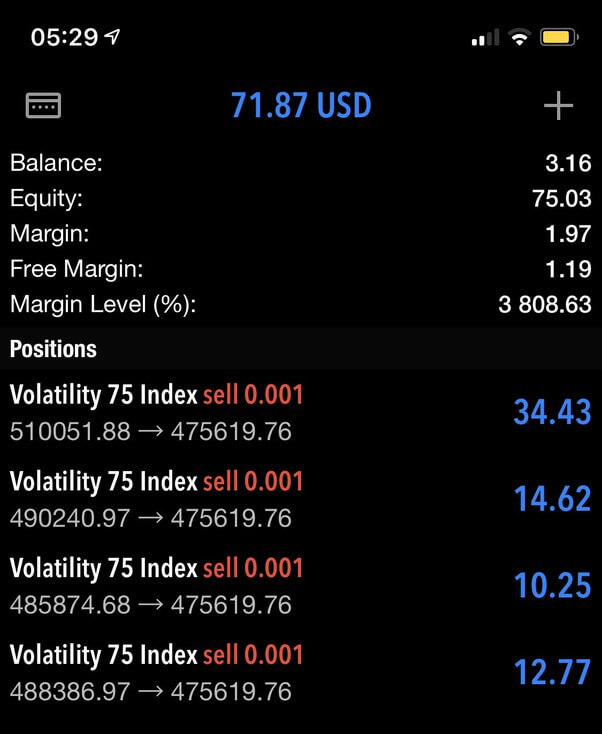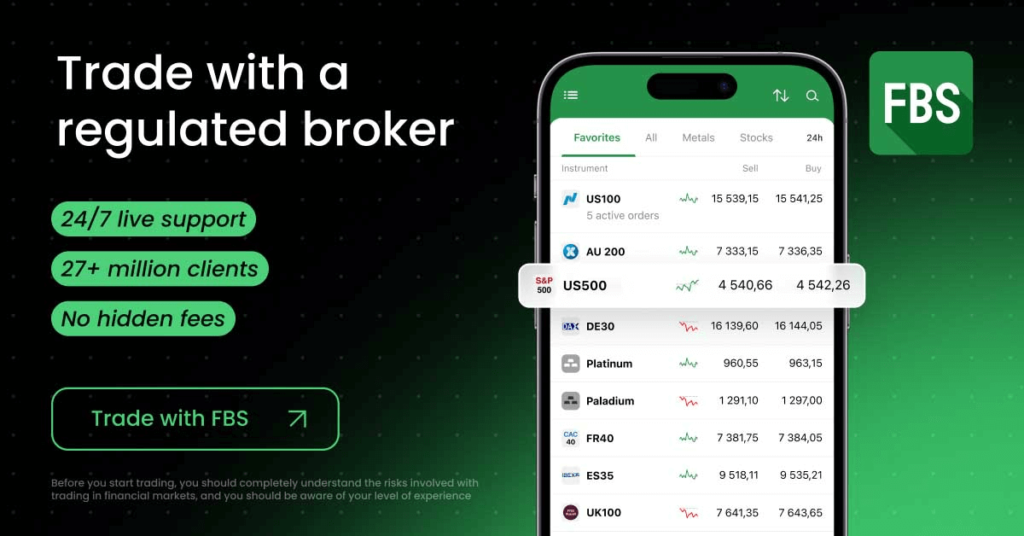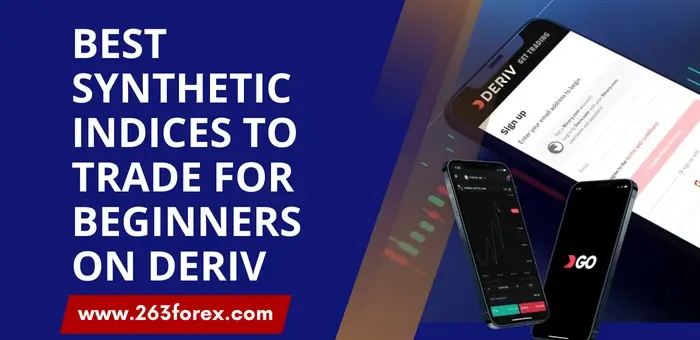When I first ventured into trading synthetic indices on Deriv in 2016, I was overwhelmed by the multitude of options. With over a decade of forex trading experience, I still found myself uncertain about which index to start with.
This guide is designed to help beginners avoid that initial confusion and set them on the right path.
I will show you the best synthetic indices for beginners that are easier to start with.
🧠 What Are Synthetic Indices?
Let’s start with a brief background on these instruments.
Synthetic indices are man-made markets created by Deriv. They’re not tied to real-world news or economies, but they move like real markets — sometimes even better. These indices run 24/7, are powered by a secure algorithm, and have predictable volatility patterns.
They’re perfect for traders who want consistency, fast setups, and no drama from economic events.
🧭 New to synthetic indices completely?
Before choosing which one to trade, it’s worth understanding how they work, how they’re created, and what moves their price.
👉 Start here: How to Trade Synthetic Indices on Deriv – Full Beginner’s Guide →
🧠 Why Synthetic Indices Appeal to Beginners
Given their nature, synthetic indices are attractive to beginners because:
– They are available for trading 24/7, including holidays and weekends. This presents multiple trading opportunities.
– They have low capital requirements. You can start with as little as $5 as you learn. This reduces the barrier to entry
– They move fast. Even a small account can grow in a short space of time. Like I did in the screenshot below, from $3 to $75 in three hours.

– Synthetics offer a variety of volatility levels. You’re not forced into high-risk assets from day one — you can pick an index that matches your risk appetite and trading style. If you want calm, trending movement, there are options. If you prefer fast action and volatility, those exist too.
👉 To make it easier, I’ve broken them down here:
Take time to understand what fits you best before jumping in — it’ll save you a lot of stress.
📊 Top Synthetic Indices for Beginners
Here is my shortlist of the best ones from experience.
1. Volatility 10 Index (V10)
- Volatility Level: Low
- Why It’s Beginner-Friendly: Offers smoother price movements, making it easier to analyze and predict trends.
- Strategy Tip: Ideal for practicing trend-following strategies and understanding market dynamics.
2. Volatility 25 Index (V25)
- Volatility Level: Moderate
- Why It’s Beginner-Friendly: Balances risk and reward, providing opportunities for learning without overwhelming volatility.
- Strategy Tip: Suitable for swing trading and learning to manage trades over longer periods.

3. Boom 1000 Index
- Volatility Level: Moderate
- Why It’s Beginner-Friendly: Characterized by regular upward spikes, offering clear entry points.
- Strategy Tip: Focus on buying after dips to capitalize on the predictable spikes.
4. Crash 1000 Index
- Volatility Level: Moderate
- Why It’s Beginner-Friendly: Features regular downward spikes, providing learning opportunities for short-selling strategies.
- Strategy Tip: Practice risk management by setting stop-loss orders to protect against unexpected movements.
🛠️ Tips for Trading Synthetic Indices as a Beginner
Start on Demo — Don’t Rush It
Even if you’ve traded forex before, synthetic indices are a different beast. I’ve seen traders blow accounts in hours from simple mistakes like picking the wrong lot size. Start with a demo account and take your time to get a feel for how each index moves.
One common slip-up? Lot sizes.
I’ve put together a guide that breaks down which lot size to use for each index — check it out here:
👉 Synthetic Indices Lot Size Guide →
I strongly recommend demo trading any index for at least a month before going live. It gives you room to make mistakes, learn, and adjust — without burning real money.

Pick One Index and Stick With It
Trying to master five indices at once will slow your progress. Start with one — maybe V10, V25, or Boom 1000 — and learn its personality. The more screen time you give it, the easier it gets to spot setups.
Keep a Simple Journal
Even during demo, write down your trades. Include what you saw, why you entered, and what happened. Over time, you’ll start seeing patterns — both in the market and in your own habits. That’s where real growth happens.
💰 How Much Can You Start With as a Beginner?
This is one question I get asked a lot and I understand where it comes from. Beginners don’t want to risk too much at the outset as they are not too sure of what they will be doing.
One of the good things about Deriv is that you can start small. Some traders begin with as little as $10–$30, especially if they’re using 0.001 lot sizes on low-volatility indices like V10 or V25.
If you’re wondering how much to start with, here’s a quick reference based on what I’ve tested and what works with proper risk management.
📊 Volatility 10
- Min Lot Size: 0.001
- Suggested Starting Balance: $10
- Why it works: Low volatility, slow movement — good for learning market structure.

🔹 Volatility 25
- Min Lot Size: 0.001
- Suggested Starting Balance: $20
- Why it works: Slightly faster than V10 but still manageable for small accounts.
📊 Boom 1000
- Min Lot Size: 0.20
- Suggested Starting Balance: $30
- Why it works: Regular upward spikes give clean buy setups — just use tight stops.
🔹 Crash 1000
- Min Lot Size: 0.20
- Suggested Starting Balance: $30
- Why it works: Predictable downward spikes, great for testing reactions and exit strategies.
📊 Boom 300
- Min Lot Size: 0.20
- Suggested Starting Balance: $40
- Why it works: More aggressive spikes than Boom 1000 — still manageable, but slightly riskier.

🔹 Crash 300
- Min Lot Size: 0.20
- Suggested Starting Balance: $40
- Why it works: Sharper, faster drops than Crash 1000 — test thoroughly in demo before going live.
But here’s the important part:
Whatever balance you plan to deposit live — demo with that same amount first.
Don’t demo trade with $10,000 if you’re only going to go live with $20. It creates a false sense of safety, and your risk decisions won’t match real conditions.
Use the demo account like a dress rehearsal. Test strategies, lot sizes, drawdowns, and recovery — as if it’s your actual money.
That way, when you go live, nothing catches you off guard.
🔗 Related Resources
- 📘 How to Trade Synthetic Indices on Deriv
- 🕒 Best Time to Trade Synthetic Indices on Deriv
- ⚡ Most Volatile Synthetic Indices on Deriv
- 🧊 Least Volatile Synthetic Indices on Deriv

📣 Share Your Experience
Which synthetic index did you start with, and how was your experience? Share your journey in the comments below to help fellow beginners navigate their trading path.
FAQs On The Best Synthetic Indices for Beginners
Volatility 10, Volatility 25, Boom 1000, and Crash 1000 are great for beginners. They offer manageable volatility and predictable movements, making them easier to learn on.
Volatility 10 is the easiest to start with. It moves slowly, respects structure, and works well with small accounts and 0.001 lot sizes.
Yes — if you’re trading something like V10 or V25 using the lowest lot size. But make sure to demo trade first using the same balance to get realistic results.
No. Focus on one. Master how it moves, how it reacts to entries, and build your strategy around it before jumping to the next.
Absolutely. Synthetic indices are coded differently and move differently. Even experienced forex traders make beginner mistakes when switching over.
Both are fine — just pick one. Boom 1000 is known for upward spikes, while Crash 1000 has sharp drops. They’re predictable once you observe them enough.





Other Posts You May Be Interested In
Exness Social, Copy Trading Review 2024 📊 Is It Worth It?
📅 Last updated: June 24, 2024 ✍️ Written by: Jafar Omar ✅ Fact-checked by: Munyaradzi [...]
HFM Premium Account Review
📅 Last updated: July 11, 2024 ✍️ Written by: Jafar Omar ✅ Fact-checked by: Munyaradzi [...]
Beginners Guide To Step Index Trading (2025)
📅 Last updated: May 10, 2025 ✍️ Written by: Jafar Omar ✅ Fact-checked by: Munyaradzi [...]
Base Currency in Forex Trading: What It Is & How to Choose (2025 Guide)💱
📅 Last updated: May 20, 2025 ✍️ Written by: Jafar Omar ✅ Fact-checked by: Munyaradzi [...]
HFM Zero Spread Account Review
📅 Last updated: July 10, 2024 ✍️ Written by: Jafar Omar ✅ Fact-checked by: Munyaradzi [...]
💸 How to Grow a Small Account Trading Volatility Indices on Deriv (2025)
📅 Last updated: May 7, 2025 ✍️ Written by: Jafar Omar ✅ Fact-checked by: Munyaradzi [...]